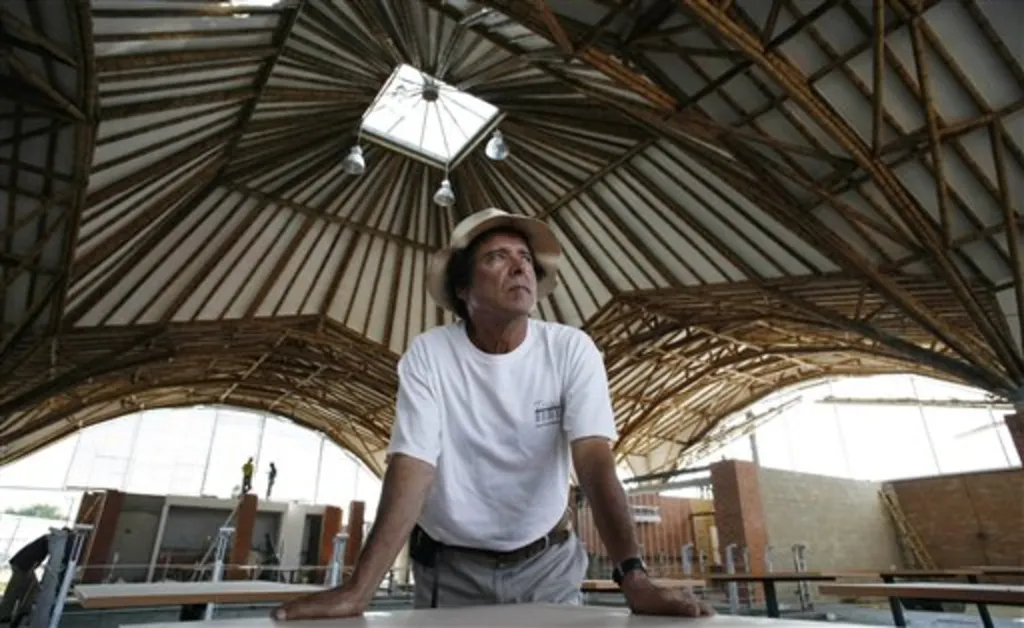In the quest for sustainable construction materials, a team of researchers led by Felipe Guerrero from the Universidad del Valle in Cali, Colombia, has made a significant stride. Their work, published in *Results in Engineering* (translated as “Results in Engineering”), focuses on Guadua angustifolia, a fast-growing bamboo species that has long been touted as an eco-friendly alternative to traditional building materials. However, its structural reliability has been a point of contention, particularly when it comes to long-term behaviors like viscoelastic creep.
Viscoelastic creep refers to the tendency of materials to deform permanently under constant stress over time. For Guadua, this phenomenon is exacerbated by the high variability in its mechanical properties. To address this, Guerrero and his team developed a stochastic viscoelastic creep model using Bayesian inference. This approach allows for the explicit quantification of uncertainty in Guadua’s transverse creep response, providing a more robust framework for predicting long-term performance.
The team conducted experimental diametral compression tests to update a generalized Maxwell model within a probabilistic framework. This method enabled them to estimate parameters and predictive credibility intervals more accurately than conventional deterministic approaches. “Our model successfully captures the natural variability of Guadua,” Guerrero explained. “This is crucial for making reliable long-term performance predictions, which is a significant step forward for the industry.”
The implications of this research are far-reaching, particularly for the energy sector. As the push for sustainable construction intensifies, the need for reliable, eco-friendly materials becomes increasingly urgent. Guadua’s renewability and low carbon footprint make it an attractive option, but its structural reliability has been a hurdle. By quantifying the uncertainty in its creep response, Guerrero’s work paves the way for more confident adoption of Guadua in construction projects.
Moreover, the methodological framework developed in this study is not limited to Guadua. It can be applied to other bio-based structural resources, opening up new avenues for research and development in sustainable construction. “This is not just about Guadua,” Guerrero noted. “It’s about providing a tool that can be used to evaluate the long-term performance of a wide range of bio-based materials.”
The study also estimated failure probabilities in structural connections, showing that for an applied stress of approximately 1.8 MPa, the probability of failure is around 5% over a 50-year design life. This level of detail is invaluable for engineers and architects looking to incorporate sustainable materials into their designs.
As the construction industry continues to evolve, the need for innovative, sustainable solutions will only grow. Guerrero’s research offers a compelling example of how scientific rigor and technological innovation can come together to address real-world challenges. By providing a more reliable framework for predicting the long-term performance of Guadua, this work not only strengthens the case for its use in construction but also sets a precedent for the evaluation of other bio-based materials.
In the broader context, this research underscores the importance of interdisciplinary collaboration. By bringing together expertise in civil engineering, materials science, and statistics, Guerrero and his team have developed a tool that has the potential to shape the future of sustainable construction. As the industry continues to grapple with the challenges of climate change and resource depletion, such innovations will be crucial in driving progress towards a more sustainable future.
The publication of this research in *Results in Engineering* further underscores its significance. As the field of sustainable construction continues to evolve, the insights gained from this study will undoubtedly play a pivotal role in shaping future developments. By providing a more reliable framework for predicting the long-term performance of Guadua, this work not only strengthens the case for its use in construction but also sets a precedent for the evaluation of other bio-based materials.
In the broader context, this research underscores the importance of interdisciplinary collaboration. By bringing together expertise in civil engineering, materials science, and statistics, Guerrero and his team have developed a tool that has the potential to shape the future of sustainable construction. As the industry continues to grapple with the challenges of climate change and resource depletion, such innovations will be crucial in driving progress towards a more sustainable future.

